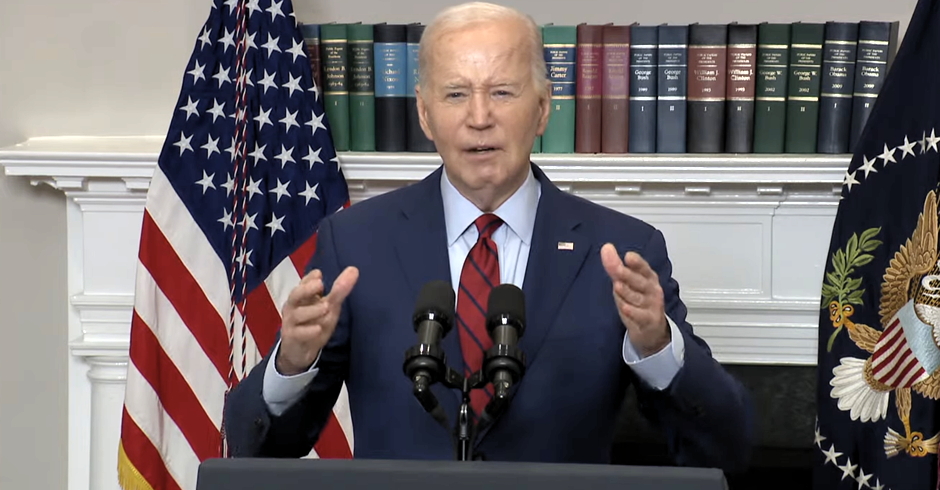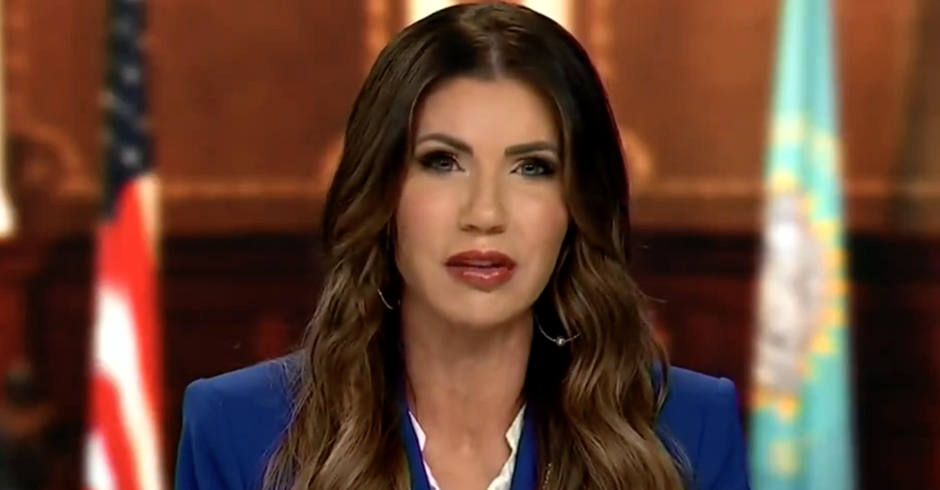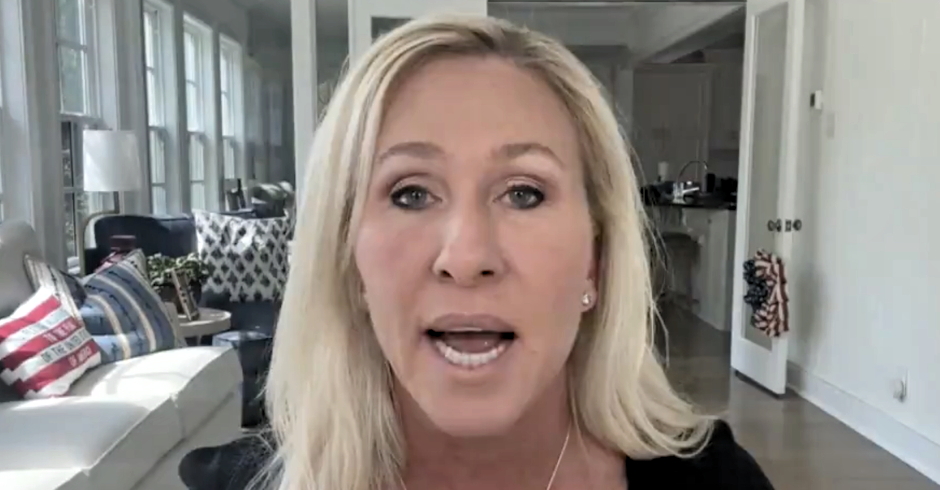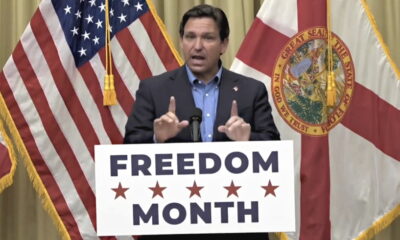Transgender Life In The US Military: Hiding In Plain Sight
Guest author Brynn Tannehill shares the stories of three transgender members of the U.S. military and how they hide in plain sight, especially as transmen
Usually when someone thinks about the period in the military prior to the end of Don’t Ask, Don’t Tell (DADT) they remember people keeping a very low profile. They think of hiding, denying and generally staying closeted to others in the military. For those who served prior to the implementation of DADT the closet was an even deeper and darker place for camouflage, cover, and concealment.
Legally, transgender people in the military are still at a point similar to the implementation of DADT in 1993. Being transgender is still considered a mental disorder with atypical sexual interests by the military medical system, much like homosexuality was viewed in 1941 for more than 50 years. Yet somehow there are transgender people who are hiding in plain sight. They deny nothing and are out to significant numbers of people within their unit. This sort of situation would have been almost unthinkable in the 1980s for lesbian, gay, or bisexual people in the military, but anecdotally this situation seems to be increasingly common for transgender military people.
Jake, a Transman
One example is “Jake.†He is an active duty junior officer and a transgender man. He has been on prescribed testosterone for just under a year. This past summer Jake changed his name to a masculine one, and had chest surgery while transiting between units. While with his previous command, Jake had come out to a few of his peers and some people had noticed his voice beginning to drop.
Nonetheless, when Jake reported to his new command it was impossible not to have to explain what was going on. It caused a considerable amount of confusion among the enlisted people in Jake’s new unit because the new lieutenant who showed up looked and sounded like a man, but the chain of command kept addressing him with female pronouns. Jake had to fix the situation quickly, and so he sat down with his First Sergeant three days after he checked in.
“I sat down with the First Sergeant, and he hinted he already knew what was going on,†Jake said in our interview. “I told him the official story is that I am a lesbian. The unofficial story is that I am a transgender man and I go by male pronouns outside of work. The First Sergeant took the position that he was okay with it, and it was none of his business anyway. But said we needed to talk to the Captain very soon.â€
“My First Sergeant and I sat down with the Captain shortly afterwards. We gave her the same official and unofficial positions. She (the Captain) had been feeling the same awkwardness about the situation as others. She seemed to look at it the same way the First Sergeant did, and seemed concerned about making sure I understood the risks. But she seemed willing to just let it ride for now.â€
When asked about how it affects him at work Jake told me, “The troops are good with it. They steer away from pronouns and just call me “LT.†I have been surprised by how accepting younger folks are in the military and in the civilian world. They’re much more accepting than the previous generation. I’m just thankful for the support I have had.â€
Mick, a Transman
“Mick†is an enlisted soldier on active duty. His situation is a little bit different–he isn’t out to the chain of command above his supervisor, but is out to everyone else in his shop. He has been on testosterone for close to a year as well, and people had noticed the changes after a few months. Mick decided that he would come out to his shop supervisor during his annual performance review.
It went well.
“She was supportive, and mostly seemed concerned with making sure I was doing this safely,†Mick said. “I told the shop one by one, and got a good feeling from all of them. Sometimes, I would try to gauge their reactions before I told them about being trans by telling them I was dating another trans man.â€
In a shop with five other men and three women, this openness has benefited everyone. “I was a good performer before, but I have gotten even better since then,†Mick observed. “Better physically, my relationships at work have improved, guys at work feel more comfortable around me, and matured a lot in the process. It’s worked out well for me.â€
Mick doesn’t know how long this could go on for, but it could be quite a while. “We see officers maybe two to three times a month. They haven’t given any hint they have an idea, and if they do they’re doing a great job ignoring it.â€
Still, every once in a while issues pop up. When a new sergeant checked in, he read Mick as male. However, the use of male pronouns and a female first name led him to privately ask Mick’s supervisor about the situation.
Jessica, a Transwoman
Still, other cases illustrate the adage, “all good things must come to an end.† Jessica’s†experiences are an illustration of this.
Jessica is a transgender woman who now lives in her target gender full time. Previously she was active duty, and transferred to the National Guard after she left active duty. In civilian life, she works as a contractor at a large base with sensitive materials. She also works side by side with active duty military people during the week.
While on active duty, she had been a stellar performer. When she left she was at junior enlisted rank, holding down the workload of two high ranking senior sergeants who had retired on active duty. Jessica believes this had a great deal to do with why her chain of command chose to let it go when she told them six months prior to the end of her time that she was transgender and beginning transition.
“On active duty, they just ignored being trans and on hormone replacement therapy. As long as I met male standards for physical readiness training and hair they were happy with my work. Even though I did push the envelope with my hair.â€
It looked as though this situation would continue when she moved and re-affiliated with the local National Guard. A sympathetic officer at the base where she works during the week handled her paperwork and swearing in. When Jessica checked in at her new unit she was very up front with her chain of command about the situation. Both her sergeant and junior officer leadership were happy to have someone with her impressive background on board. They were supportive, and seemed willing to find ways to work around the situation. However, just prior to a recent drill weekend, it all came apart.
Senior leadership above the local level seemed willing to ignore the transgender issue, but insisted on strict adherence to male grooming standards. Unfortunately, because Jessica lives as a woman full time in her professional life, this created an intractable situation. She has transitioned at work already, and a “high and tight” — the iconic military buzz cut — wouldn’t help her professional image.
Because of her honesty and outstanding previous service, the National Guard is leaning towards a medical separation for a back injury she suffered while on active duty, and an honorable discharge characterization. Still, she wishes it hadn’t come down to this.
“I got the feeling that a certain Major in particular was really trying to stick it to me and was looking to humiliate me with the whole haircut thing, then progressively segregating me from the unit by ordering me not to wear my uniform anymore… (then) to hide me away from the rest of the unit by keeping me in the NCO (non-commissioned officer) office until everyone else started sticking up for me. Either way, cutting my hair or not he wanted me out.†Jessica told me.
Jessica described meeting the officer who was pressing the issue: “The Major is in his late 30s, early 40s. He told me he was upset because I had caused him to, ‘dig through regulations for the past week in order to figure out how to deal with you.’  He told me that he already had a hard enough time figuring out how to segregate the gay soldiers from the straight soldiers when it comes to matters of barracks space, tents, showers or whatever. That he feels mixing to two together will create sexual tension problems. Then he told me that I made that situation even worse. ‘Where would I put you? With the gay males because you’re a male? Or with the gay females because you’re trying to be a girl? Do I need five different accommodations for soldiers or six? When does it stop? These are the things I have to address because of all this.'”
Jessica was surprised at the reactions of most of unit, though. “It amazes me that so many of the people that I had only just met at my Guard unit think it’s unfair. They all weren’t in their 20s or 30s either. I also had some older people in their 40s tell me they thought it wasn’t right and apologized for what’s going on.â€
This outcome is fairly typical, though, according to Paula Neira of OutServe-SLDN. “The system is designed to catch trans people. This can go on for a while, but eventually it catches up with them; usually when changing commands. I think we are going to encounter more of these situations, as we did during DADT, where commands will turn a blind eye towards service members that they want to retain until a situation or higher level of the chain of command forces action.â€
David McKean, former chief legal counsel for OutServe-SLDN, agrees. “As a general matter, there are several people serving ‘openly’ (to a degree) while their commands turn a blind eye. That is wonderful, but I share Paula’s assessment that the system is very likely to catch up to those members at some point. The goal there is to make sure they’re not exposed to any risk of disciplinary action if it does.â€
From an anecdotal perspective, though, there seems to be some lessons to take away from what I have been seeing. The first is that trans men serving openly seems to be far more common than trans women. I could have easily included 10 more stories like Jake and Mick’s. Jessica’s story is as far as I could find a trans woman getting, and it was the only one. Mick summed up the situation from his perspective: “I think it is easier for me as a female to male transman. It always seems like the feminine is a lot more scrutinized. No one takes on a lesbian for being too masculine.â€
The other commonality between all the stories of trans people serving fairly openly is that they have been surprised at how accepting younger people are about being transgender in comparison with the previous generation. This mirrors polling data which shows that Generation X is more accepting than Baby Boomers of LGB people, and members of Generation Y are even more so than Generation X. This shift in attitudes seems to bleed over to transgender people as well.
This leads to the most important question. Could rank-and-file acceptance, or at least tolerance, of transgender people in the military be as big a non-issue as LGB was? Anecdotal evidence suggests so.
Â
Editor’s note: The New Civil Rights Movement is publishing a week-long series of articles about transgender people who are serving or have served in the United States military despite the present ban. All week we will be sharing the stories of real people’s lives in a considerable effort to expose the unnecessary barriers that obstruct transgender open service in military, and show why the transgender medical exclusion is antiquated and must be removed. You can read all the articles as they are published here.
Â
 Brynn Tannehill is originally from Phoenix, Ariz. She graduated from the Naval Academy with a B.S. in computer science in 1997. She earned her Naval Aviator wings in 1999 and flew SH-60B helicopters and P-3C maritime patrol aircraft during three deployments between 2000 and 2004. She served as a campaign analyst while deployed overseas to 5th Fleet Headquarters in Bahrain from 2005 to 2006. In 2008 Brynn earned a M.S. in Operations Research from the Air Force Institute of Technology and transferred from active duty to the Naval Reserves. In 2008 Brynn began working as a senior defense research scientist in private industry. She left the drilling reserves and began transition in 2010. Since then she has written for OutServe magazine, The Huffington Post, and Queer Mental Health as a blogger and featured columnist. Currently, she is on the board at SPART*A. Brynn and her partner currently live in Xenia, Ohio, with their three children.
Brynn Tannehill is originally from Phoenix, Ariz. She graduated from the Naval Academy with a B.S. in computer science in 1997. She earned her Naval Aviator wings in 1999 and flew SH-60B helicopters and P-3C maritime patrol aircraft during three deployments between 2000 and 2004. She served as a campaign analyst while deployed overseas to 5th Fleet Headquarters in Bahrain from 2005 to 2006. In 2008 Brynn earned a M.S. in Operations Research from the Air Force Institute of Technology and transferred from active duty to the Naval Reserves. In 2008 Brynn began working as a senior defense research scientist in private industry. She left the drilling reserves and began transition in 2010. Since then she has written for OutServe magazine, The Huffington Post, and Queer Mental Health as a blogger and featured columnist. Currently, she is on the board at SPART*A. Brynn and her partner currently live in Xenia, Ohio, with their three children.

Enjoy this piece?
… then let us make a small request. The New Civil Rights Movement depends on readers like you to meet our ongoing expenses and continue producing quality progressive journalism. Three Silicon Valley giants consume 70 percent of all online advertising dollars, so we need your help to continue doing what we do.
NCRM is independent. You won’t find mainstream media bias here. From unflinching coverage of religious extremism, to spotlighting efforts to roll back our rights, NCRM continues to speak truth to power. America needs independent voices like NCRM to be sure no one is forgotten.
Every reader contribution, whatever the amount, makes a tremendous difference. Help ensure NCRM remains independent long into the future. Support progressive journalism with a one-time contribution to NCRM, or click here to become a subscriber. Thank you. Click here to donate by check.
 |






















